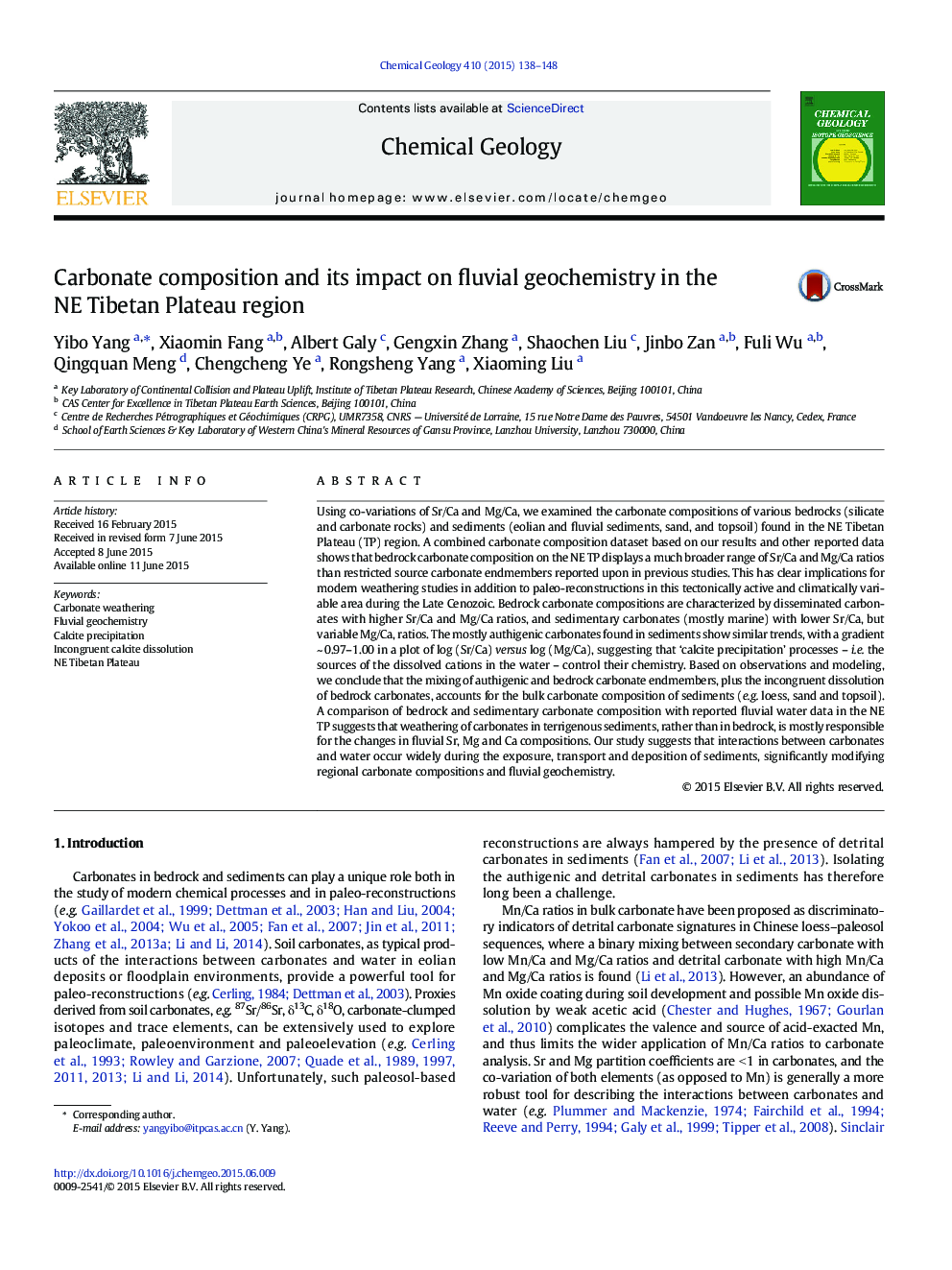| Article ID | Journal | Published Year | Pages | File Type |
|---|---|---|---|---|
| 4698490 | Chemical Geology | 2015 | 11 Pages |
•Carbonate composition and its variability in bedrock and sediments are examined.•The disseminated carbonates are widely found in silicate rocks.•Carbonate precipitation processes control the authigenic carbonate chemistry.•Carbonate weathering in surface sediments not bedrock controls fluvial chemistry.
Using co-variations of Sr/Ca and Mg/Ca, we examined the carbonate compositions of various bedrocks (silicate and carbonate rocks) and sediments (eolian and fluvial sediments, sand, and topsoil) found in the NE Tibetan Plateau (TP) region. A combined carbonate composition dataset based on our results and other reported data shows that bedrock carbonate composition on the NE TP displays a much broader range of Sr/Ca and Mg/Ca ratios than restricted source carbonate endmembers reported upon in previous studies. This has clear implications for modern weathering studies in addition to paleo-reconstructions in this tectonically active and climatically variable area during the Late Cenozoic. Bedrock carbonate compositions are characterized by disseminated carbonates with higher Sr/Ca and Mg/Ca ratios, and sedimentary carbonates (mostly marine) with lower Sr/Ca, but variable Mg/Ca, ratios. The mostly authigenic carbonates found in sediments show similar trends, with a gradient ~ 0.97–1.00 in a plot of log (Sr/Ca) versus log (Mg/Ca), suggesting that ‘calcite precipitation’ processes – i.e. the sources of the dissolved cations in the water – control their chemistry. Based on observations and modeling, we conclude that the mixing of authigenic and bedrock carbonate endmembers, plus the incongruent dissolution of bedrock carbonates, accounts for the bulk carbonate composition of sediments (e.g. loess, sand and topsoil). A comparison of bedrock and sedimentary carbonate composition with reported fluvial water data in the NE TP suggests that weathering of carbonates in terrigenous sediments, rather than in bedrock, is mostly responsible for the changes in fluvial Sr, Mg and Ca compositions. Our study suggests that interactions between carbonates and water occur widely during the exposure, transport and deposition of sediments, significantly modifying regional carbonate compositions and fluvial geochemistry.
